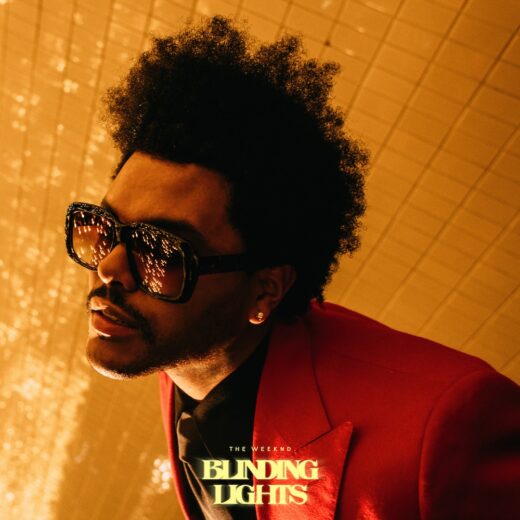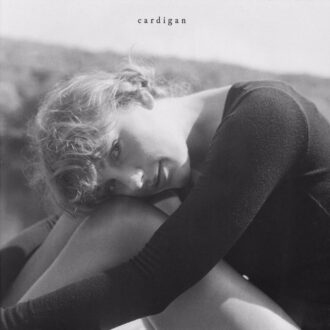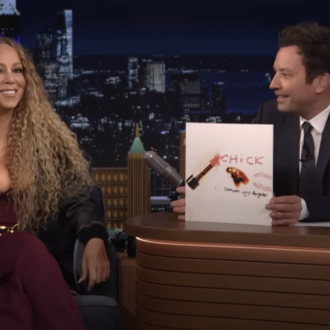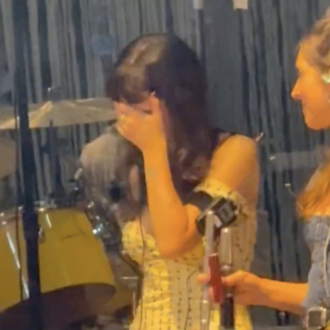In The Number Ones, I’m reviewing every single #1 single in the history of the Billboard Hot 100, starting with the chart’s beginning, in 1958, and working my way up into the present. Book Bonus Beat: The Number Ones: Twenty Chart-Topping Hits That Reveal the History of Pop Music.
It’s a meme now. Daniel Craig sounds positively blissed out. His face is impassive as ever, but there’s a strange tone in his voice. He sounds like a good friend who is about to share something unbelievably valuable with you. He knows that you are going to love it, and he loves that he gets to be the one who shows it to you. He’s onstage at Studio 8H in 30 Rockefeller Center, and he is here to introduce the Saturday Night Live musical guest. These days, the five-second video shows up in my feed every Friday afternoon, when many of us are about to get off work and go live our actual lives for a couple of days: “Ladies and gentlemen, the Weeknd!” (You get it? Because it’s the weekend.)
It’s always fun to watch Saturday Night Live hosts introducing musical guests. Years ago, someone started a Twitter account that’s just that, nothing else. Over and over, in extremely short videos, we get these tiny time-capsule glimpses. They’re weirdly hypnotic: George Foreman introducing Hole, Steven Seagal introducing Michael Bolton, Tom Hanks introducing Sade, Deion Sanders introducing Bon Jovi. A few of them are absolute classics. Nobody, for instance, has ever made more of a meal out of Salt-N-Pepa’s name than Patrick Stewart. Daniel Craig’s Weeknd introduction belongs to that class. In these tiny little video nibbles, we get a whole lot of context in a few seconds, but Craig’s Weeknd introduction, great as it is, can’t quite convey how much context there was in that moment. He didn’t even know how much there was. A lot of shit was swirling through the air as he said those five words so beautifully.
Daniel Craig was on Saturday Night Live to promote No Time To Die, his final film as James Bond. Craig was good at and sick of playing Bond at that point. Whenever he made one of those movies, he would hint at the idea that he was finally done, and then MGM would lure him back for another run. Not this time. This was really it. Fourteen years after taking over the role, he was definitively finished, and the end was in sight. A week later, No Time To Die would be in theaters, and he could move on with his life. But a week later, No Time To Die was not in theaters. Instead, its release was pushed back indefinitely because a terrifying new infectious disease was spreading across the planet with head-spinning speed. Theaters shut down. Everything shut down. Hundreds of Americans died every day, then thousands. Millions stayed at home, only venturing out for stressful supply runs to the supermarket or Target. It would be another year and a half before No Time To Die came to theaters, and I have to say, it wasn’t really worth the wait.
That was the last Saturday Night Live for a while. A month later, the show tried a few at-home specials, with cast members and celebrity guests filming their bits in their respective houses. I didn’t watch those. They seemed depressing. The show returned months later, with smaller-than-usual in-studio audiences and lots of press releases about how they were following all the government guidelines about how to do live shows mid-lockdown. Future Number Ones artist Morgan Wallen was disinvited from a musical-guest spot after he was caught on video making out with randos at an Alabama college party a week earlier. When any cultural institution resumed business in 2020, it always felt tentative. Nobody knew whether anything was OK. These conditions were perfect for a gleaming dance-pop jam about abject misery and heedless self-destruction to flourish.
After Daniel Craig said his line, the next thing you heard was a synthetic fog, which gave way to a drum-machine oompah beat and a keyboard riff that has echoed on ever since. The Weeknd was there to sing “Blinding Lights,” the track that would soon become the definitive anthem of that fucked-up time in American life, and then beyond that time. “Blinding Lights” is a sleek little marvel of retro-futuristic ’80s coke-sweat gloss, and it is now officially the biggest pop song of all time. Daniel Craig was right to sound amazed and ecstatic. History was happening all around him.
About that “most popular pop song of all time” thing: That’s not me talking. That’s Billboard. In 2021, Billboard revived a chart that it called the Greatest Songs Of All Time Hot 100. Supposedly, the songs on this list were the most successful in Hot 100 history. Chubby Checker’s “The Twist,” a single that came out six decades earlier, was #2, and the Weeknd’s “Blinding Lights” was #1. You might have questions. You might be like, “What the fuck does that mean?” I’m right there with you. Comparing “Blinding Lights” to “The Twist” is like comparing apples to manhole covers. They’re not the same thing. They don’t serve the same function, and they barely exist on the same temporal plane. The revived list felt less like an objective assessment of a pop song’s impact, more an excuse to send out press releases and sell NFT trading cards. Nevertheless, that’s part of the official record: “Blinding Lights,” biggest pop song of all time.
The Billboard thing is fucking stupid, but it’s just one accolade among many that have been heaped upon “Blinding Lights.” Billboard named “Blinding Lights” the biggest hit of 2020, which is a lot easier to swallow than its place on the all-time list. “Blinding Lights” sat atop the Hot 100 for four weeks — a respectable stay, not an absurd one. But the song also became the first ever to stay within the top 10 for an entire year, and that is absurd. “Blinding Lights” spent a record-breaking 90 weeks in the Hot 100. It was #3 on the year-end list for 2021, another absurdity. “Blinding Lights” eventually replaced Ed Sheeran’s “Shape Of You” as the most-streamed song ever on Spotify. As I write this, it’s closing in on five billion streams.
That last paragraph is an indictment of the current pop-music economy. It’s a sign of present-day stasis. These days, songs either have noisy debuts and then disappear forever, or they burrow in like ticks and then never go away. A bunch of the songs in this week’s top 10 have been in there forever, and they seem like they’ll be there until the sun consumes the earth, or perhaps until a much-needed Billboard rule change. But if we have to live in this reality, at least the officially anointed biggest pop hit of all time is “Blinding Lights.” At least it’s a banger.
It really is a banger. When it first came out, I don’t think I fully appreciated “Blinding Lights” and its level of bangerosity. It was obviously a good song, but it was just as obviously a total pastiche, one that leaned especially hard into a sleek and overt ’80s synthpop sensibility. This was nine years after Ryan Gosling put on the scorpion jacket in Drive, so self-destructive neon-noir romanticism seemed a little played-out, even as a retro exercise. The one-finger keyboard riff, while catchy as all fuck, was redolent of a-ha’s “Take On Me.” (Another bald “Take On Me” bite will appear in this column before too long.) The Weeknd never tried to stop evoking Michael Jackson, but his ecstatically paranoid falsetto on the bridge hit the MJ button especially hard. I could see all the component parts glued together on “Blinding Lights,” and maybe that’s what kept me from feeling the magic at first.
But the magic is there, and incessant overplay did nothing to dim it. Honestly, incessant overplay was good for “Blinding Lights.” Once I knew every bleep and thunk and whoop intimately, I had an easier time understanding how they all added up to something special. The magic is in the way the song shines, the way it glides. The intro is a goosebump moment — the apocalyptic ’80s-movie keyboard wash, the dim echo of the riff, the slightly clumsy “Take On Me”-ass drum programming. “Heartless,” the song that the Weeknd released two days before “Blinding Lights,” has way better drums, but the simplistic Casio-present midtempo lumber somehow works on this one. It’s so European, so happily devoid of syncopation, that you kind of want the drums to be a bit lame. And anyway, that’s all there to set up the dizzy, glassy riff, the real star of the show. When that thing arrives, it’s a no-joke goosebump moment. If I paid stadium prices to see the Weeknd live this summer, and I did consider it, then the arrival of that keyboard riff would be one of the main factors going into that decision. I bet it hits like crazy in a vast, communal context.
The entire “Blinding Lights” track seems to be built specifically to serve that keyboard riff. Everything around the riff twinkles and undulates, drawing attention to the thing at the center. There are so many other elements in the mix, digital smears and blares and funky low-end wobbles, but all of them work like backup dancers. When the Weeknd himself starts singing, he sounds like he’s trying on a character — his voice in a lower register than usual, the faintest hint of fake British accent in there. But he slides right over that riff, his vocal melody echoing it a bit, leading up to the moment where he eases into the Michael Jackson-ish tone where he’s so comfortable. His words might glide right past me, but his little vocal tricks — the hiccups on “guh-uh-one,” the sinuous menace of the chorus’ first “ooh” — lodge their way into my brain anyway. I love that “ooh.” You can sing along to “Blinding Lights” and fool yourself into thinking that you’re hitting an unearthly harmony on the “ooh.”
After the chorus, the Weeknd yells “hey” along with the beat a couple of times, like he’s in a high-school ska band. It’s a rare moment of exuberance from a singer whose default setting is louche desperation. It takes a lot to get the Weeknd fired up, but a song like this can do it. His two sides, the depressive art-kid libertine and the big-tent mainstream pop star, are so often locked in contention with one another. His attempts at big-tent down-the-middle dance-pop jams, songs that Bruno Mars might sing in some other universe, don’t always work because they can be a bit half-hearted. He can’t always commit to the party. But in rare, magical moments, the Weeknd’s two sides align, and he hits on a big-tent down-the-middle dance-pop jam that still allows him room to brood and snarl and indulge his persona’s self-destructive urges while still bringing the party-centric pop-star energy. “Can’t Feel My Face” is one such moment. “Blinding Lights” is another.
“Blinding Lights” is a song about drunk driving. It doesn’t advertise itself as such, but that’s what the Weeknd intended. On “Blinding Lights,” the Weeknd’s narrator is out in Las Vegas, partying hard and feeling alone. The sun is just starting to rise, and he has not slept. He misses someone badly. That person might not want to see him, but he needs to see that person. The urge consumes him. He sings about that urge as an addiction: “I’m going through withdrawls/ You don’t even have to do too much/ You can turn me on with just a touch, baby.” So he jumps in the car and heads out to see this person, not thinking about the chance that he could wreck, that he could hurt himself or other people. That’s not how he thinks. Talking to Esquire, the Weeknd himself explains it like this: “‘Blinding Lights’ [is about] how you want to see someone at night, and you’re intoxicated, and you’re driving to this person and you’re just blinded by streetlights. But nothing could stop you from trying to go see that person because you’re so lonely. I don’t want to ever promote drunk driving, but that’s what the dark undertone is.”
The ’80s gleam of “Blinding Lights” is purely secondhand, at least where the Weeknd is concerned. It would have to be. Abel Tesfaye was born in February 1990, so he just barely missed his existence overlapping with the ’80s in even the tiniest of ways. I mentioned Drive earlier, and I’m sure that movie was on the moodboard, especially after the Weeknd brought in the Chromatics for a “Blinding Lights” remix. Talking to Billboard, he also names Grand Theft Auto: Vice City as a foundational force: “There was a nostalgia for when I was a kid playing video games and listening to Hall & Oates and Michael Jackson while driving through the city.” I’m older than he is, but I know exactly what he’s talking about. When you’re driving along that beach highway and the sun is setting and you’ve shaken the cops and “Broken Wings” is blaring? Oh, baby, that’s the stuff. That’s the feeling. You might as well be driving drunk then, and it doesn’t matter because the only people you can run over are digital NPCs.
The Weeknd co-wrote “Blinding Lights” with a bunch of his old friends. Belly and DaHeala, longtime associates who have been in this column for their work on previous Weeknd hits, are credited co-writers. But the important guy is Swedish pop baron Max Martin, who previously helped the Weeknd make “Can’t Feel My Face.” When they got together for “Blinding Lights” and a few other tracks from the After Hours album, the Weeknd and Max Martin hadn’t worked together in a few years, and Martin hadn’t had his name on a #1 hit since Justin Timberlake’s “Can’t Stop The Feeling!” in 2016. Max Martin does not typically go nearly four years without a #1 hit. Maybe he felt like he had something to prove.
Max Martin brought in one of his proteges, Oscar Holter. I don’t know much about Oscar Holter. Nobody knows much about Oscar Holter. The internet tells me that he’s from a small Swedish town called Degerfors and that he was in an industrial dance group called Necro Facility in the late ’00s and early ’10s. I just pulled up 2011’s “You Want It,” Necro Facility’s most-played Spotify track, and it is very funny but also not uncatchy. Holter seemingly worked his way up through the Euro-pop universe, and he scored his first big international credit as one of seven songwriters on Christina Aguilera’s 2012 flop “Let There Be Love,” a Max Martin/Shellback production. Holter helped write former Number Ones artist Carly Rae Jepsen’s “Run Away With Me,” so his place in Valhalla is secure. A couple of years after “Blinding Lights,” Holter produced former Number Ones artist Charli XCX’s “Good Ones,” a song that I love even if Charli doesn’t. The important thing is: Oscar Holter is one of Max Martin’s boys. We’ll see his work in this column again.
The Weeknd already had a basic idea for “Blinding Lights” when he took it into the studio with his co-writers, and he knew the sound that he wanted to chase. In the Billboard story about “Blinding Lights” becoming the biggest hit of all time, the generally interview-averse Max Martin says that an engineer rigged up a projection of “a computer-animated car driving through a futuristic city for inspiration.” Martin, Holter, and the Weeknd co-produced “Blinding Lights.” It’s not entirely clear who did what, but Martin’s sonic fingerprints are all over the track — all those sleek mega-pop hooks that stick with you forever. If the Weeknd wanted his ’80s pastiche to resonate like the actual ’80s blockbusters, he couldn’t have conjured a better collaborator than Max Martin. Martin is old enough to remember the ’80s, to understand how those songs felt in the moment, and he’s canny enough to translate those sounds into something that resonates in this decade. I think that’s why “Blinding Lights” hits so hard on repeated exposure. It’s the rare pastiche that captures the spirit of the real thing and makes it feel immediate.
The Weeknd debuted “Blinding Lights” in a fancy, expensive commercial for an electric Mercedes, which traces the car’s evolution for the decades. That means the first time anyone heard the Weeknd’s drunk-driving song, he was selling a car. That’s pretty funny. For the “Blinding Lights” video, the Weeknd and director Anton Tammi continued the late-night Vegas-freakout storyline from their “Heartless” clip. The Weeknd dances and drives his Mercedes through Las Vegas, and he does indeed look gakked out of his mind. Sometimes, he’s bleeding from the side of his head, possibly from the moment that he gets beat up by bouncers mid-video. At one point, he’s alone in a nightclub with a singer, played by the Japanese model Miki Hamano, and she gets him to float through the air like a vampire. It’s full of movie-dork references, and it marks the moment that the Weeknd started to think he could make movies. It’s not a bad video, but it’s not a great one, either. We keep getting those annoying moments where car noises drown out the song, or where the song goes all slow for a second. The Weeknd continued that vague storyline in all of his After Hours videos, and it went to increasingly surreal and gruesome places, some of which were pretty fun to watch.
The Weeknd sang “Blinding Lights” on TV a bunch of times, and he brought awkward art-kid gimmicks to most of those moments. On Colbert, for instance, he was trapped in a glass cube, and he was shown in black-and-white split-screen. On Kimmel, he was fake-bloody and bandaged, sometimes upside-down, against a dark-and-stormy backdrop. It was all a bit much. The Weeknd’s attempts to sell “Blinding Lights” honestly weren’t that effective. The song debuted at #11, and then it tumbled down the chart before beginning its arduous rise back up. It didn’t reach the top 10 until its 12th week.
One week after COVID shut down American life, the Weeknd released his After Hours album. I reviewed the record in that moment, and I thought the context overwhelmed the music. I was wrong. (I’m never wrong, so savor it while you can. Also, I used the Daniel Craig SNL intro as the lede for that review, too, but it hadn’t become a meme yet, so it’s completely different. I am not just repeating myself. Shut up.) My take in that review was: After Hours sounds amazing, but who’s going to want to hear this guy’s sad-playboy bellyaching at time like this? I should’ve just stuck with the “sounds amazing” part. After Hours absolutely fucking bumps. It’s one of the most purely enjoyable pop records of this decade so far, all glittery texture and icy drift. There are very few records better-suited for driving through a city at night. And if anything, the album’s sad longing for escape gave it more resonance in the early lockdown days. One of the first lines on “Blinding Lights,” after all, is “I’ve been on my own for far too long.”
In the end, the thing that took “Blinding Lights” to #1 wasn’t any of the Weeknd’s arty, cinematic grandstanding. It was a TikTok trend. Someone came up with a dance — a goofy thing where you run onscreen and then kick your legs and pump your arms like you’re swimming — and it caught on when people were stuck at home. People did the dance with their roommates, or their kids, or their parents. Ultimately, “Blinding Lights” became a dance-craze record, just like “The Twist,” the song that it supposedly replaced atop the Billboard all-time list. Then the song went into radio rotation, and it never left.
The Weeknd was already huge before “Blinding Lights,” but the song might’ve become bigger than the artist. When the Weeknd didn’t get any Grammy nominations in 2020, he got mad and removed himself from contention, vowing to never have anything to do with the Grammys again. When the show got him to finally return earlier this year, they made a big thing out of it. “Blinding Lights” is the reason that the Weeknd got to do the Super Bowl Halftime Show in a socially-distanced stadium in 2021. He turned that into another art-stunt, naturally, getting Oneohtrix Point Never to serve as his music director and doing a setpiece where he’s trapped in a lightbox, surrounded by face-bandaged clones. It was the first time the Super Bowl Halftime Show ever featured a prominent Siouxsie And The Banshees sample, and I had a great time watching it, partly because it allowed me to make this Twitter joke: “Pepsi branding is funny cuz The Weeknd is really more of a coke guy.” (I was pretty proud of that.) Naturally, the spectacle ended with the Weeknd singing “Blinding Lights” as fireworks erupted all around him.
If anything, “Blinding Lights” was so big that it overshadowed all the Weeknd’s other After Hours tracks. Later singles didn’t catch on in the same way, even though those songs are really good. The pulsing, slow-building six-minute title track peaked at #14. (That song’s beat-drop moment, two minutes in, is a beautiful thing.) “In Your Eyes,” a melodramatic hard-stepper with some maximal “Careless Whisper”-ass saxophone action, peaked at #13. You could argue that the Weeknd’s only non-“Blinding Lights” 2020 track that really overperformed wasn’t his own. It was his appearance on the posthumous Juice WRLD song “Smile,” which peaked at #7. (It’s a 7. Juice WRLD’s two highest-charting singles, 2018’s “Lucid Dreams” and the posthumous 2020 Marshmello collab “Come And Go,” both peaked at #2. “Lucid Dreams” is an 8, and “Come And Go” is a 7.) But you couldn’t keep all those After Hours tracks out of the #1 spot forever. Ladies and gentlemen, the Weeknd will be back.
GRADE: 9/10
BONUS BEATS: There are so many “Blinding Lights” covers, and so few of them deserve your attention. Most of them are either unimaginative or outright awful. But I like this one that Christine And The Queens did during a 2020 pandemic livestream:
The Number Ones: Twenty Chart-Topping Hits That Reveal The History Of Pop Music is out now via Hachette Books. I can’t sleep until you buy the book.




